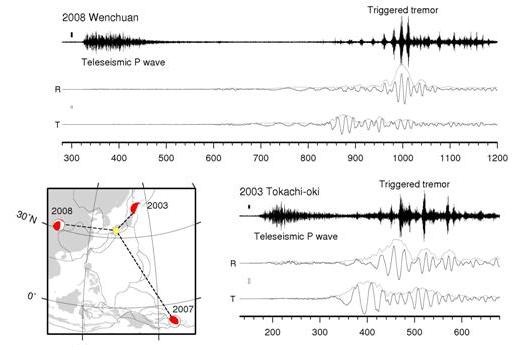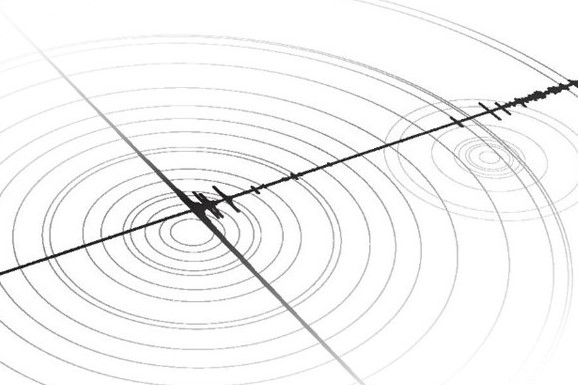Remote, Dynamic Triggering of Earthquake & Slow Earthquake
地震及びスロー地震の遠地・動的誘発
遥か遠くで起きた大地震の地震波が日本列島を通過する時、小規模な地震や火山性微動、スロー地震が誘発されることがある。どのようにして地震や微動が誘発されるのかを調べる事により、地震発生メカニズムの解明に迫っている。
Study on the triggering of small earthquakes, volcanic tremors, and slow earthquakes caused by the passage of seismic waves from distant large earthquakes. Such induced or triggered seismicity is often seen across Japan and these studies provide a better understanding of the mechanisms that cause earthquake occurrences.


Application of Distributed Acoustic Sensing (DAS) to Seismology
新たな地震観測としてのDAS
地下に埋設されている光ファイバケーブルそのもののをセンサーとし、新たな地震観測を試みている。例えば50 km長の光ファイバーケーブルを一本使えば、5 m間隔で約1万点もの地震計を配置することと等価である。大規模記録の調査から、新たな地震学の在り方を模索する。
Distributed acoustic sensing (DAS), which enables a single optic fibre cable to function as multiple sensors, is a technique to measure the strain-rate distributed along the cable. This technique is applied to record the ground motions in western Japan using a 50 km-long optic fibre cable beneath a national road, every 5 m, corresponding to about 10,000 sensor deployments.
Distributed acoustic sensing (DAS), which enables a single optic fibre cable to function as multiple sensors, is a technique to measure the strain-rate distributed along the cable. This technique is applied to record the ground motions in western Japan using a 50 km-long optic fibre cable beneath a national road, every 5 m, corresponding to about 10,000 sensor deployments.

Copyright © 2024 M.MIYAZAWA. All Rights Reserved.